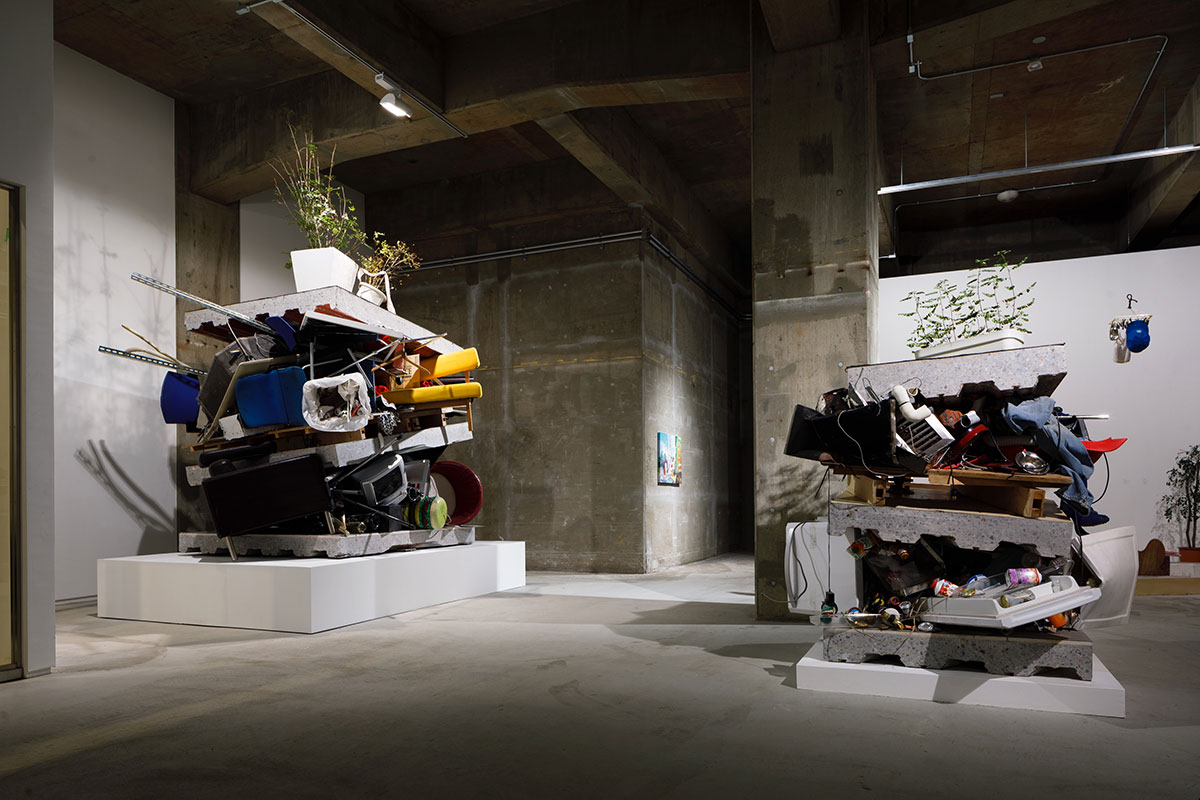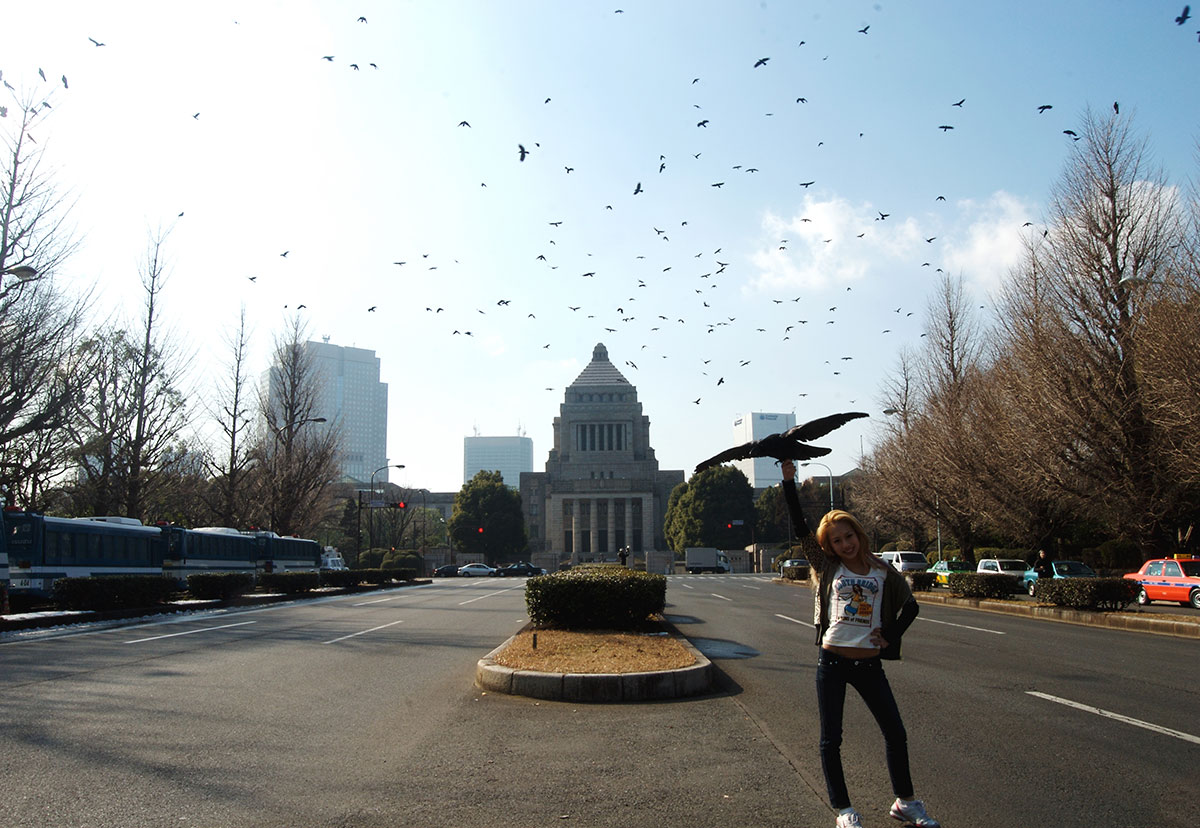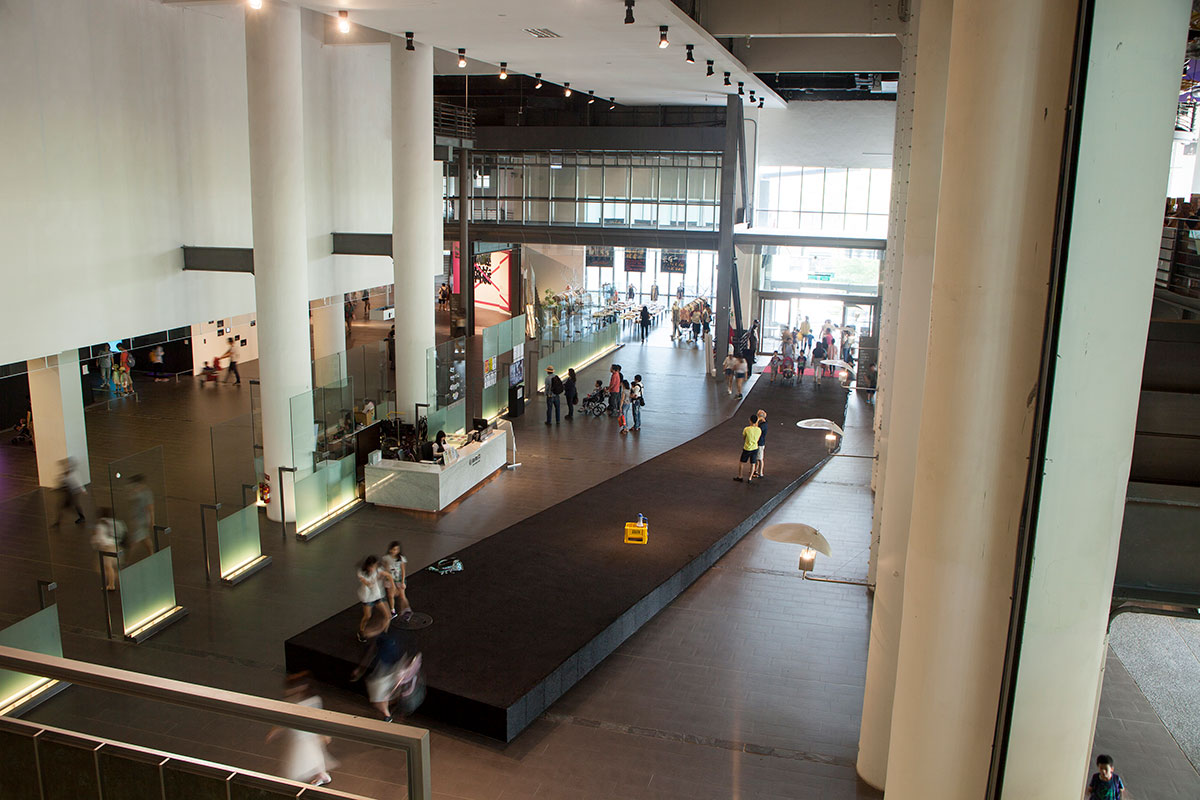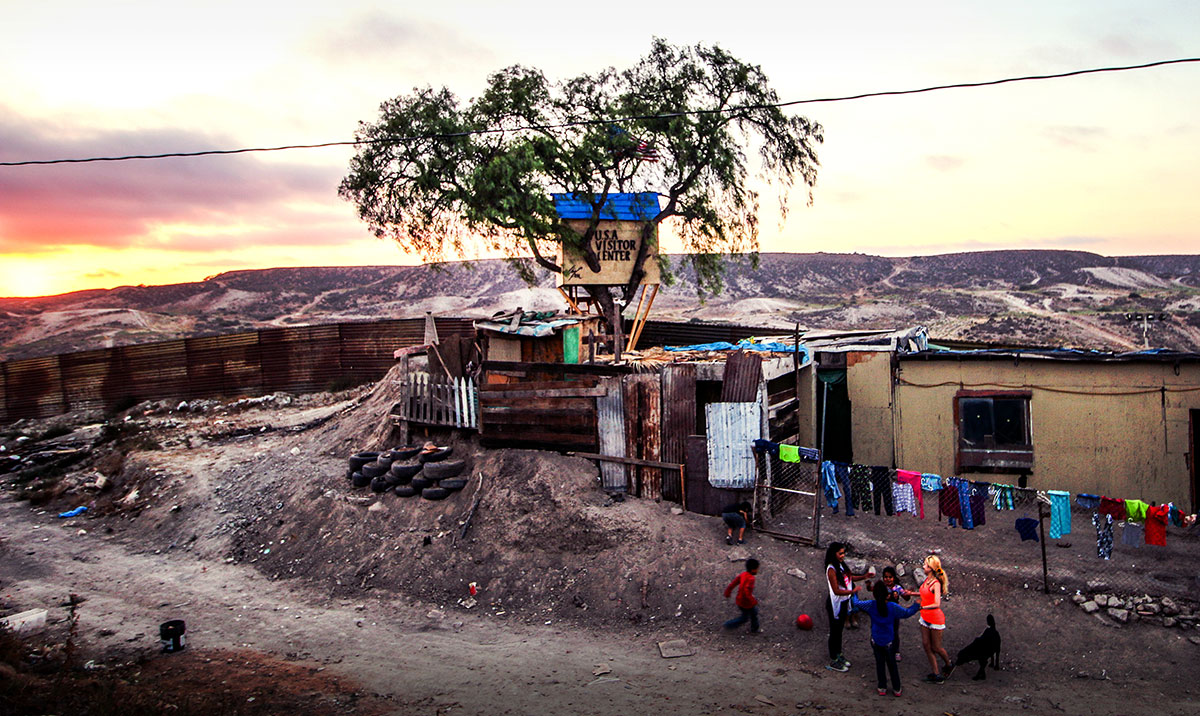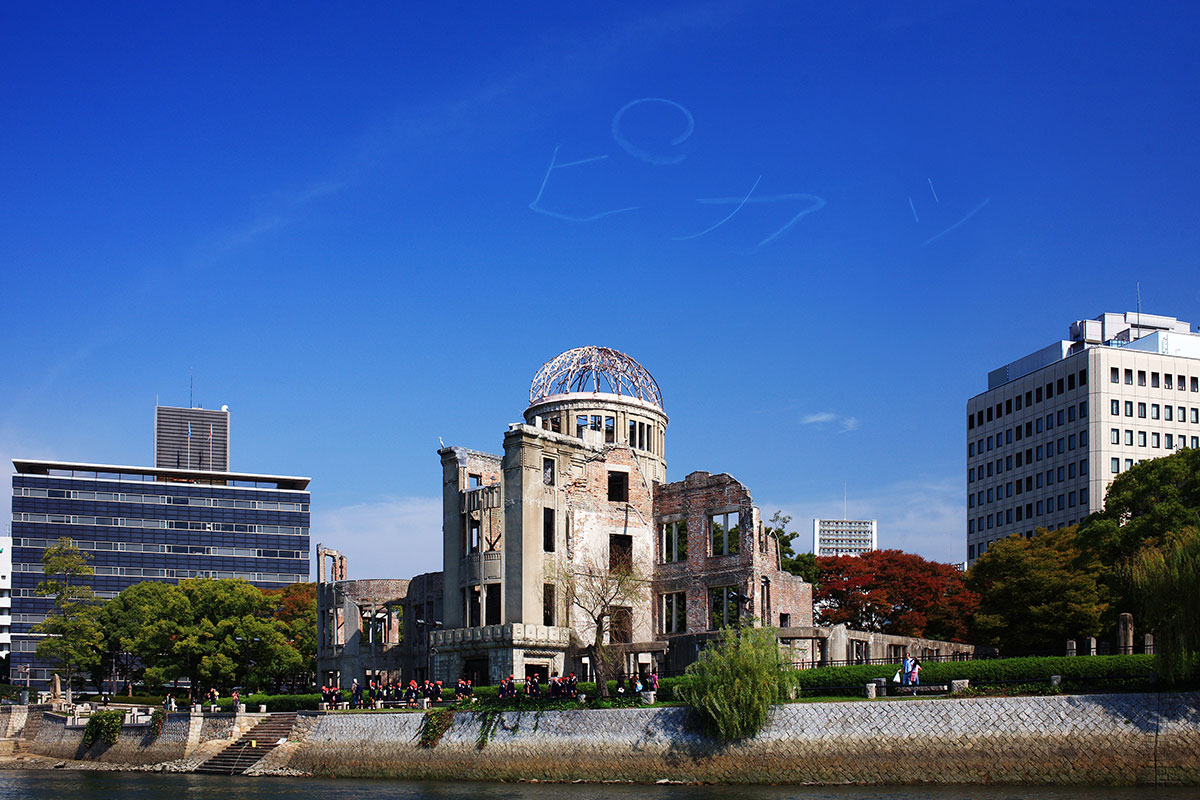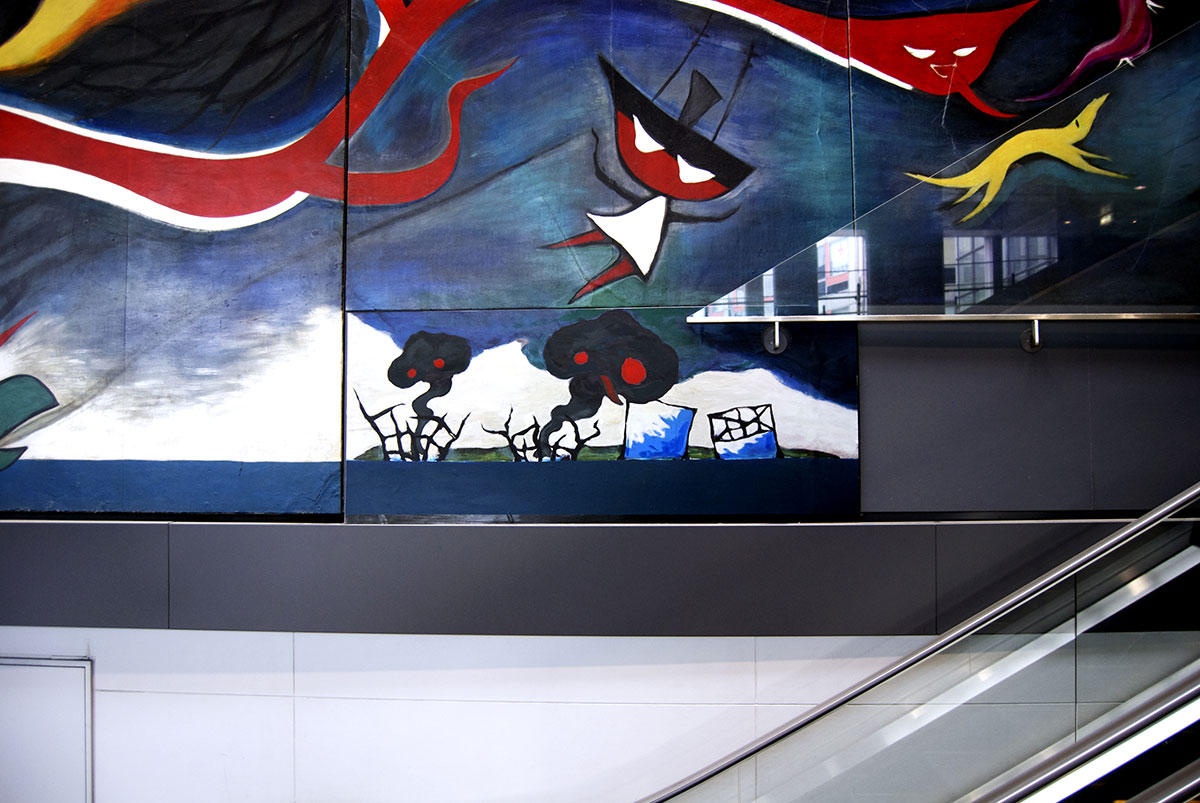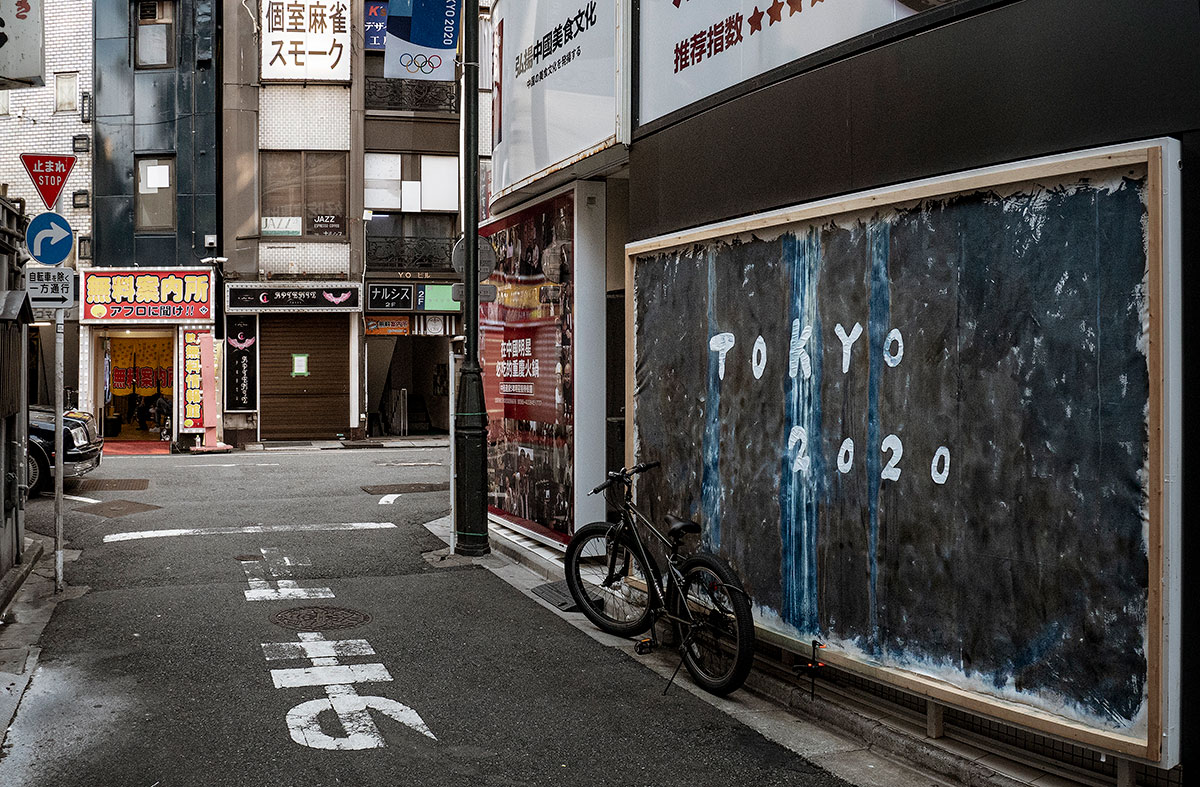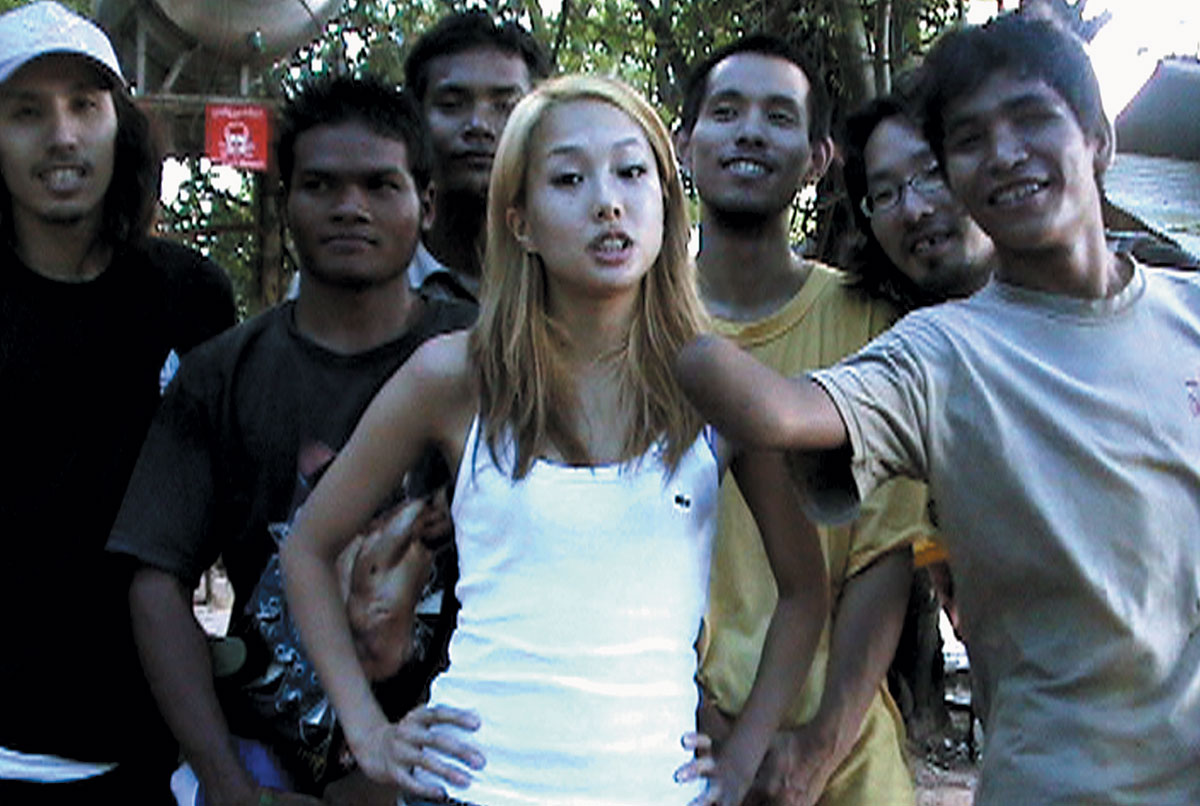TRIBUTE: Chim↑Pom-Happy Spring
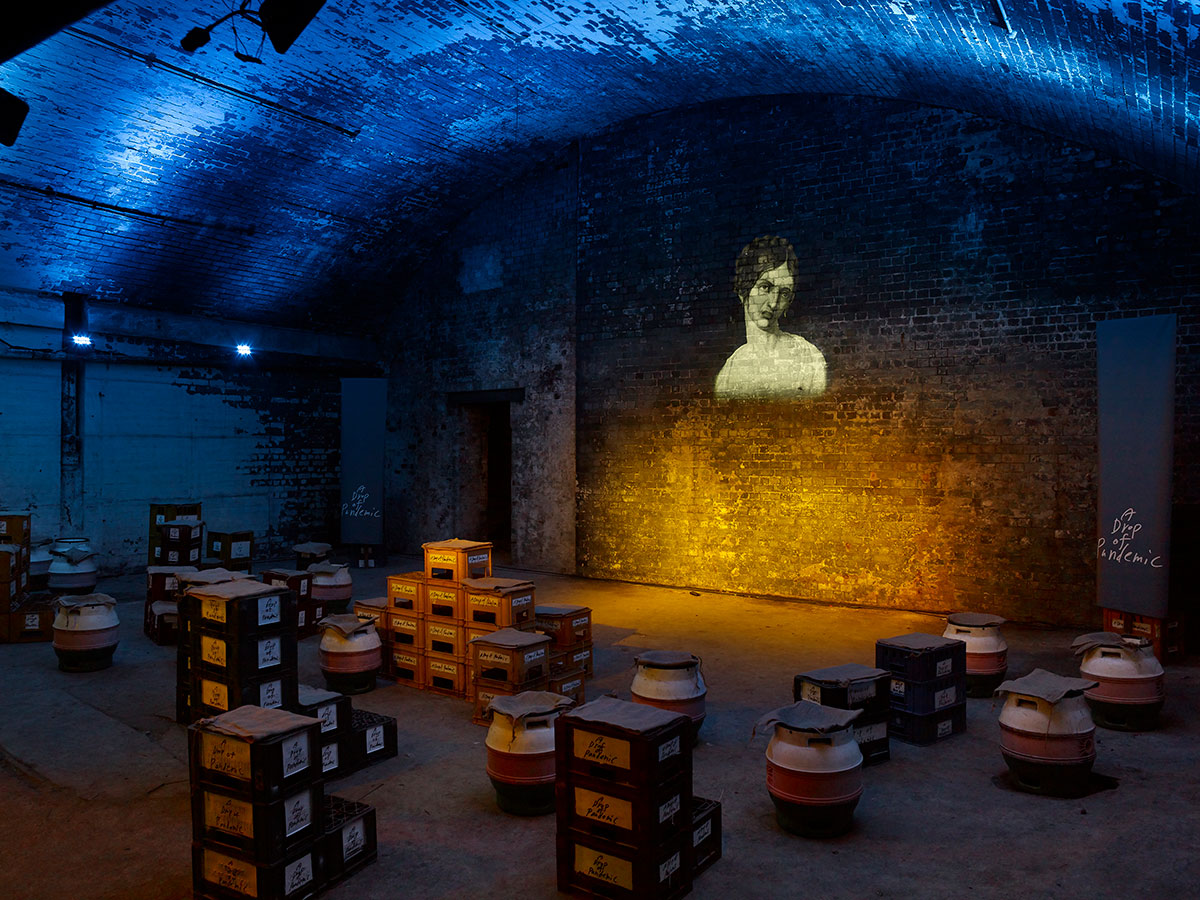 Equipped with highly original ideas and impressive energy, Chim↑Pom has undertaken numerous projects intervening in society in ways that constantly confound our expectations. With themes ranging from cities and consumerism to gluttony and poverty, Japanese society, the A-bomb, earthquakes, images of stardom, the mass media, borders, and the nature of publicness, their works serve as powerful statements on a plethora of phenomena and challenges in modern society, delivered mostly with a healthy dose of humor or irony.
Equipped with highly original ideas and impressive energy, Chim↑Pom has undertaken numerous projects intervening in society in ways that constantly confound our expectations. With themes ranging from cities and consumerism to gluttony and poverty, Japanese society, the A-bomb, earthquakes, images of stardom, the mass media, borders, and the nature of publicness, their works serve as powerful statements on a plethora of phenomena and challenges in modern society, delivered mostly with a healthy dose of humor or irony.
By Efi Michalarou
Photo: Mori Art Museum Archive

“Happy Spring” is Chim↑Pom’s largest retrospective exhibition today. This is the first-ever museum retrospective of Chim↑Pom, bringing together major works from the start of their 17-year career to more recent years, plus new works produced for this exhibition, approximately 150 works in total. Dynamic exhibition design, rich in creative ingenuity, also assists in shedding new light on the ever-surprising world of Chim↑Pom. The title “Happy Spring” signals Chim↑Pom’s hope for a brighter spring even amid this seemingly never-ending pandemic, and that we retain our powers of imagination even if that long-awaited season arrives in the depths of adversity. In these unpredictable times, the powerful, convention-busting works of this enduring, but equally-unpredictable group of artists are certain to excite the imagination and serve as a guide as we join in contemplating a better future. The retrospective brings together a large selection of the extraordinary sextet’s best-known work, from early classic “Thank You Celeb Project – I’m BOKAN” (2007–2008) to the A-bomb-themed Making the Sky of Hiroshima “PIKA!” (2009) and LEVEL 7 feat. “Myth of Tomorrow” (2011); numerous larger works such as the “Build-Burger” series (2016/2018); small, humorous pieces, and an array of immersive/experiential works, in the world’s first comprehensive retrospective exhibition of work by the internationally-renowned Chim↑Pom. This is distinctly different to the usual, chronologically-arranged retrospective. Works are exhibited by sections such as “Cities and Publicness,” “Street” and “Don’t Follow the Wind,” and multiple viewing routes provided to encourage diverse readings of the exhibition. Visitors will also find themselves plunged into some dynamic exhibition spaces, including a large asphalt-paved street appearing on the bilayer structure within an exhibition gallery added as part of the spatial design, and an entire gallery space composed into a single giant installation featuring multiple works. A fascinating lineup of events and performances has also been organized on-site throughout the duration of the exhibition. The exhibition features new works, including the latest version of “SUPER RAT” which is Chim↑Pom’s self-portrait, a new sound installation conceived around the event of a Chim↑Pom member Ellie giving birth in 2020, a nursery (daycare center) being set up at the exhibition in a new art project Crying Museum inspired by the child-raising challenges of Chim↑Pom’s generation, and more. “Super Rat” (2006): “Super Rat” is a term coined by pest controllers for a new, more aggressive and resilient breed of rat with a higher resistance to conventional rat poisons. Such rats are said to have appeared during environmental cleanup efforts in Tokyo that were launched in preparation for the 1964 Olympics. Chim↑Pom began this series in 2006 when the proliferation of super rats in urban areas had become a significant problem. This installation consists of rats captured with nets in various downtown areas in Tokyo such as Shibuya and Shinjuku that were then stuffed and presented alongside a video documenting their capture. As the “urban wild,” the super rat, in seeking to toughen itself up and coexist with humans by evolving in the face of a hostile environment, is a “portrait” of Chim↑Pom, who unflinchingly persist in their activities from the outskirts of society. Since the accident at the Fukushima Daiichi Nuclear Power Plant in 2011, this work has also come to serve as a metaphor for people living in Japan, forced to reassess their lifestyles in the wake of radioactive contamination. “Black Of Death” (2007/2013): In 2007, a large number of crows gathered in the skies above various parts of Tokyo including the busy streets of Shibuya and the National Diet Building. Chim↑Pom had circled the city’s streets by motorcycle and car with a stuffed crow in hand, playing the sounds of crows crying from speakers. These cries were pre-recordings of sounds that crows actually make when calling others, leading hordes of crows to follow them in hopes of saving their fellow kind that had presumably been captured by humans. This work consists of a video and photographs documenting these actions. In Tokyo at the time, the proliferation of crows and their evolution into a larger and more intelligent species due to increasing amounts of garbage, food waste, and food loss had become a significant problem. In addition, according to the superstition that a “crying crow is a harbinger of a person’s death,” crows are sometimes regarded as ominous creatures in Japan. In this work, however, crows, which are generally dreaded and detested, are depicted in a positive and lighthearted manner as resilient creatures that endure within the city, just like human beings. After the Great East Japan Earthquake, Chim↑Pom produced “Black Of Death” (2013), featuring footage of the exclusion zone in Fukushima that had become infested with crows in the absence of its residents, the Expo ’70 Commemorative Park in Osaka, and again in the streets of Shibuya. “Build-Burger” (2016/2018): In 2016, Chim↑Pom self-organized the solo exhibition So see you again tomorrow, too? at the Kabuki-cho Shopping Center Promotion Union Building in Tokyo, just before its demolition. Conceived for this occasion was a work created by cutting a square piece out of the 4th, 3rd, and 2nd floors of the building and directly piling it onto the 1st floor. This massive sculpture can be likened to a hamburger that has fallen due to gravity while sandwiching the remnants of each level including furniture, fixtures, and posters between the floors. With its architectural quality that derives from the way in which it uses a section of the building, this work embodied the exhibition theme of “scrap & build” – an approach to urban development in modern Japan that favors knocking down and starting again over renovation or reuse. Chim↑Pom themselves describe this work as “reminiscent of the fast food-like mass production and mass consumption in cities.” This exhibition presents two works from the “Build-Burger” series produced for the performance-based event “Ningen (Human) Restaurant,” which subsequently took place in 2018 in another building in Kabuki-cho that was scheduled for demolition. “Kokkurisan Tattoo” (2008): The necromantic act of kokkurisan [Japanese table-turning] became wildly popular in Japan in the 1970s. Participants each place their finger on a coin, positioned on a piece of paper with letters written on it. The coin then moves, allegedly due to the workings of a spirit summoned during a séance, and the letters on which the coin stops spell out words that can be interpreted as a message. Inspired by this necromancy, the five members of Chim↑Pom used a needle in place of a coin to inscribe a tattoo on Mizuno Toshinori’s back by means of automatic writing, and documented this act through video and photographs. Mizuno undoubtedly experienced both the physical pain of being tattooed and the psychological anguish of being left with a messy and irremovable mark. What is shocking is the discrepancy between how the five members playfully move the needle about as part of a game and the graphic nature of the scars that will remain for a lifetime. This project, which was originally scheduled to be performed a total of ten times, has been further repeated on multiple occasions. The exhibition presents documentation of the project’s first installment, featuring Om, a sacred spiritual symbol in Hinduism and popular tattoo motif. “Making the Sky of Hiroshima “PIKA!” (2009): is a work that captures the moment in 2008 when the artists chartered a skywriting plane to write the word “Pika” (evoking the flash of the bomb) above the A-Bomb Dome in Hiroshima. The artists’ intention was to render visually, and in comic-book style, the growing indifference to the peace on which contemporary Japanese society is founded, but when misunderstanding and speculation were added to the mix, the result was controversy. Having apologized to A-bomb survivors, their families and supporters for not giving sufficient advance notice of the stunt, Chim↑Pom has subsequently continued to converse and occasionally collaborate with them and the wider Hiroshima community on a number of projects. Subsequent Hiroshima-themed works include “PAVILION” (2013-) and “Non-Burnable” (2017) both featuring origami paper cranes, plus the still-burning flame from the bomb in “We Don’t Know God” (2018).
Photo: Chim↑Pom, A Drunk Pandemic. 2019-2020, Private collection, Commissioned and produced by Manchester International Festival and Contact, 2019, Curated by Contact Young Curators, Courtesy: ANOMALY and MUJIN-TO Production, Tokyo, Photo: Michael Pollard
Info: Curator: Kondo Kenichi, Mori Art Museum, 53rd Floor, Roppongi Hills Mori Tower, 6-10-1 Roppongi, Minato-ku, Tokyo, Japan, Duration: 18/2-29/6/2022, Days & Hours: Mon & Wed-Sun 10:00-22:00, Tue 10:00-17:00, www.mori.art.museum/
